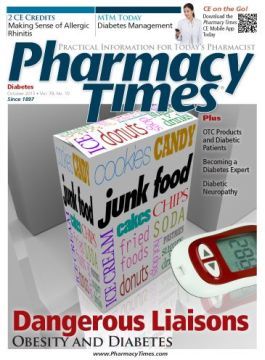Publication
Article
Pharmacy Times
Introducing the Preventive Medicine Pharmacist
Author(s):
Community pharmacies are evolving into practices that help to encourage better health on a number of levels.

Community pharmacies are evolving into practices that help to encourage better health on a number of levels.
When I attended pharmacy school, the only branch of pharmacy that interested me was community, and the busier the store was, the happier it made me. Our teachers were from the pre-computer era, and one of our mottos was “Count, pour, lick, and stick!” I figured I’d be following the CPLS protocol for my entire career, and Gehenna would freeze over before we took on tasks such as disease state management and diabetes education. Last time I checked, the temperature was 33 degrees and falling.
I can’t believe the scope of practice covered by community pharmacy today. Never in my wildest dreams would I have thought I’d be giving immunizations. Now it is among my favorite parts of the job. And while some see filling hundreds of prescriptions each day as mundane, I find it fascinating. I get to deal with 250-plus cases a day, each different from the last. Even more fascinating is where I want to take the practice of preventive medicine in community pharmacies.
Approximately one-third of the US population is overweight and another third is obese. That being said, I would estimate that around 250 million people in this country could benefit from nutritional and exercise counseling. That, my friends, is what I refer to as a target-rich environment. As a Preventive Medicine Pharmacist (PMP), I use a controlled diet and exercise protocol to help patients reduce their weight. This has the benefit of improving their overall quality of life as well as their glucose control, lipid profile, and blood pressure.
Community pharmacies are evolving into amazing practices that help to encourage better health on a number of levels. The company I work for recently treated my store to a renovation. Suddenly, our shelves were filled with low-fat items such as Greek yogurt, gluten-free snacks, and organic food options. You could practically design a January circular with a month-long diet in it just using items we carry. Add a few supplements to that order, and we have generated a nice front-end shopping trip.
Along with the renovations came a new consultation office. Finally, a place I can talk to my patients in absolute privacy and no longer have to review the side-effect profile of an erectile dysfunction med with a guy while other customers hover on line behind him.
The consultation office is an optimal setting for the PMP. In it, I can weigh patients, take their measurements, review food journals, and offer advice on how to adopt healthier habits. I can then take them around the store for a guided shopping trip. The visit can take up to an hour, which we should be able to bill as medication therapy management. Some would argue that this is a nutritionist’s job, but I say we pharmacists have a valid role in this. We were taught about diet and exercise as a first-line disease defense, so why not employ that knowledge and simultaneously tap into a multi-billion-dollar market?
The real obstacle here is reimbursement. We need to get paid to do this. I’m sorry, but our services are of worth and they should not be given away for free. Some might ask whether patients will be willing to pay for these services. Possibly, but what we really need to give this legs is third-party reimbursement. In order to get it, we need to prove that preventive counseling is less costly in the long run than complex medication regimens and cardiovascular surgery. This shouldn’t be such a heavy lift, but it is proving to be.
People may ask about my education in the field. I got my degree in the school of life. I used to be 306 pounds and worked my way to become a 190-pound Boston Marathon qualifier. Admittedly, I have gained back 30 pounds over the years and am working on losing it again. Nonetheless, I am living proof that one can dramatically improve one’s health through weight loss. We have a chance to help our patients do the same. Are you with me?
Jay Sochoka, RPh, BSPharm, CIP, has more than 20 years of clinical experience in community pharmacy. He is the author of Fatman in Recovery (2012) and the PharmacyTimes.com blog Piller of the Community, where he frequently writes about preventive medicine. He lives in Covington Township, Pennsylvania, with his wife, Sheryl Lynn; his son, Julian; and his dog, Rigby.







